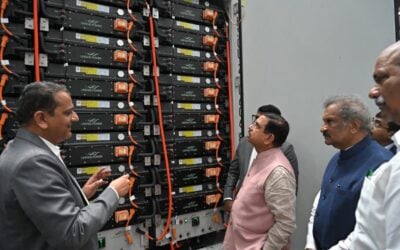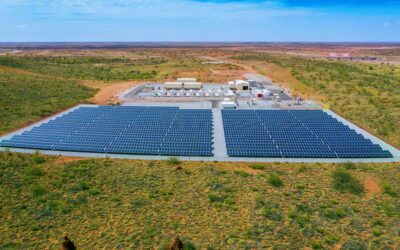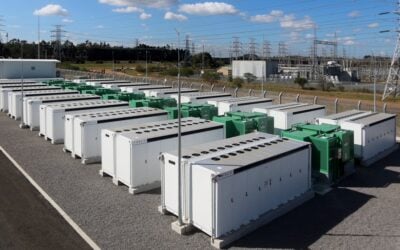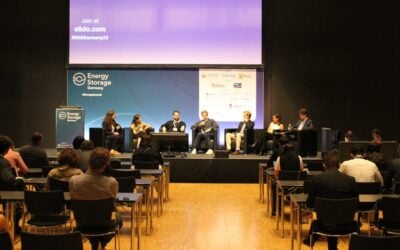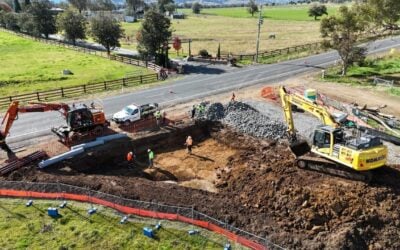
Renewable energy developers and IPPs discussed the growing attractiveness of co-locating storage and solar at Solar Finance & Investment Europe (SFIE) 2025 this week.
The two-day event in London this week (4 and 5 February) brought together developers, investors, optimisers, financiers and policymakers and was covered by our sister sites PV Tech and Solar Power Portal.
Enjoy 12 months of exclusive analysis
- Regular insight and analysis of the industry’s biggest developments
- In-depth interviews with the industry’s leading figures
- Annual digital subscription to the PV Tech Power journal
- Discounts on Solar Media’s portfolio of events, in-person and virtual
Hybridisation and co-locating with storage key to strengthening revenues for European solar
Speaking on a panel about merchant financing risks and opportunities in Europe on Day One, Lisa McDermott, managing director of project finance at ABN AMRO Bank, said that the bank is financing an increasing volume of merchant risk but that hybrid portfolios and ones that incorporate storage are more attractive investment destinations.
“If we’re doing merchant, we’ll do a more diverse portfolio,” said McDermott. “We’re seeing two things in the market. Some parties are putting the blinkers on and [using] the same tactics. But others are smarter; they’re working on their business case, they’re working on stabilising that revenue line and one method is hybridisation and co-location.”
See the full version of this article on PV Tech.
Growing curtailment driving value
On the second day of the event, a panel chaired by Ben Fulton, senior consultant at cleantech advisory firm Apricum Group, discussed the challenges of co-locating solar and storage projects, especially those that choose to add BESS capacity to an existing solar project retrospectively. An audience poll showed that around 43% of those in attendance viewed grid interconnection and permitting as the biggest barriers to co-located projects.
But the big question on everyone’s mind was: with the value of batteries becoming increasingly apparent, are standalone solar projects becoming economically unviable?
Anastasios Christankis, chief operating officer at Queequeg Renewables, noted that it varies significantly by market.
He stated: “In the UK, standalone solar projects do make sense owing to grid constraints, but most developers elsewhere are looking at co-location to maximise value.”
The main advantage of co-location is diversifying revenue streams. This is particularly key in markets where curtailment is on the rise, and Michiel Adriannse, managing director at Claritas Investments, noted that he has seen interest in retrospective co-location rise as curtailment becomes an increasing issue.
He noted: “Curtailment wipes out a large chunk of your revenue—we have parks where curtailment hit 25%, and now we’re considering locating batteries there”.
In response to a question about the value of adding BESS to a solar project where curtailment was not a problem, Christankis stated that it was often far easier to add BESS capacity sooner than later, noting: “If you don’t do it now, and you try to do it retrospectively, you face issues.”
Overall, the value of co-location over large-scale standalone projects is something that the panel agreed on, and according to Adriannse, most banks are understanding of the desire to retrospectively co-locate BESS with solar projects.
He noted: “Once you have an issue with a solar park, I find most banks are willing to work with you to solve it. Banks are quite willing to get on board with co-location, but grid-scale standalone battery projects are more complex”.
See the full version of this article on Solar Power Portal.
The comments chime with a Premium interview with IPP Econergy that Energy-Storage.news published this week, in which its head of energy storage Joshua Murphy said that the ‘solar duck curve’ is becoming more of a theme in Europe.

